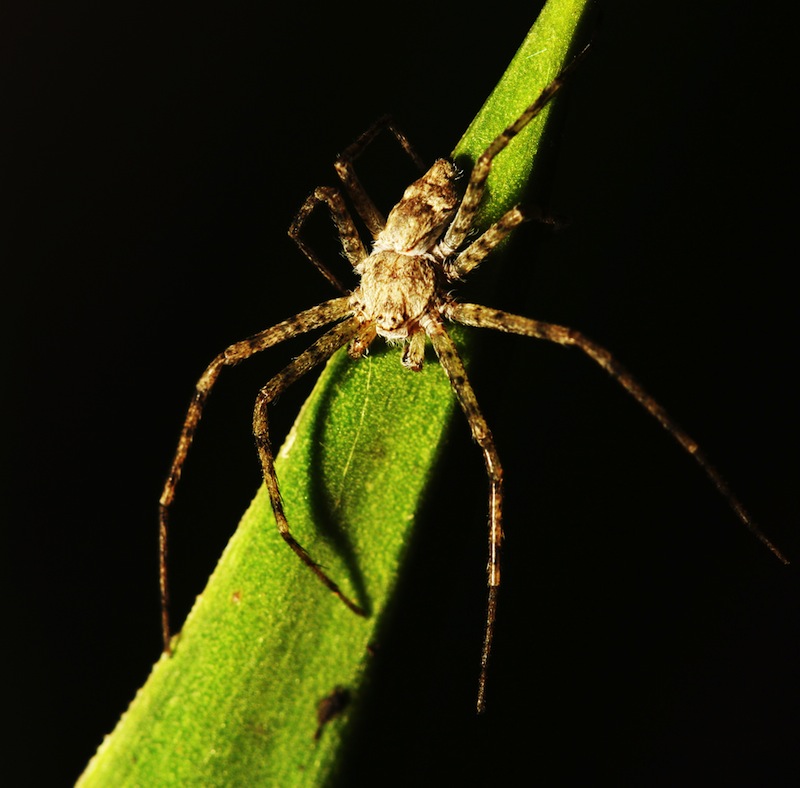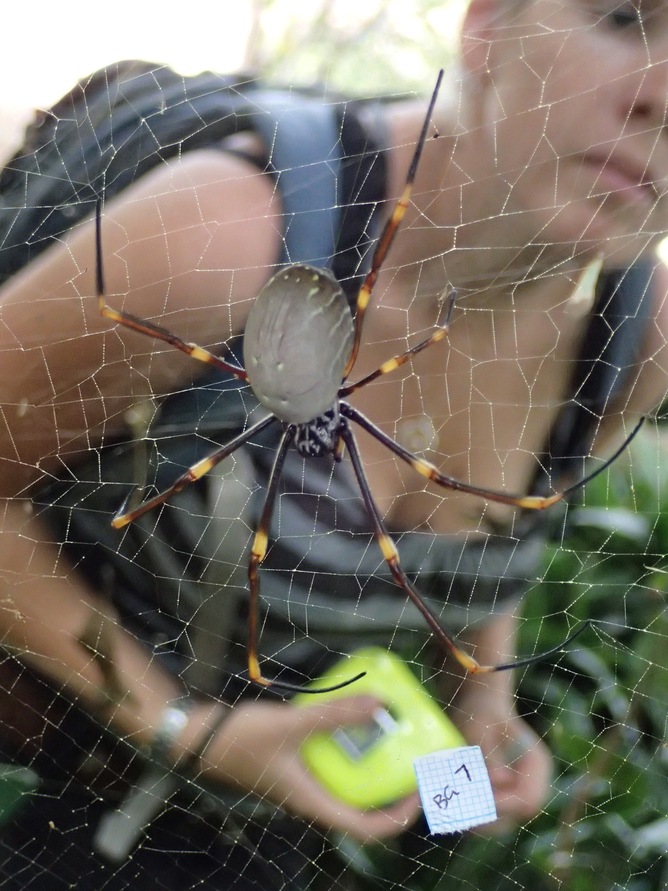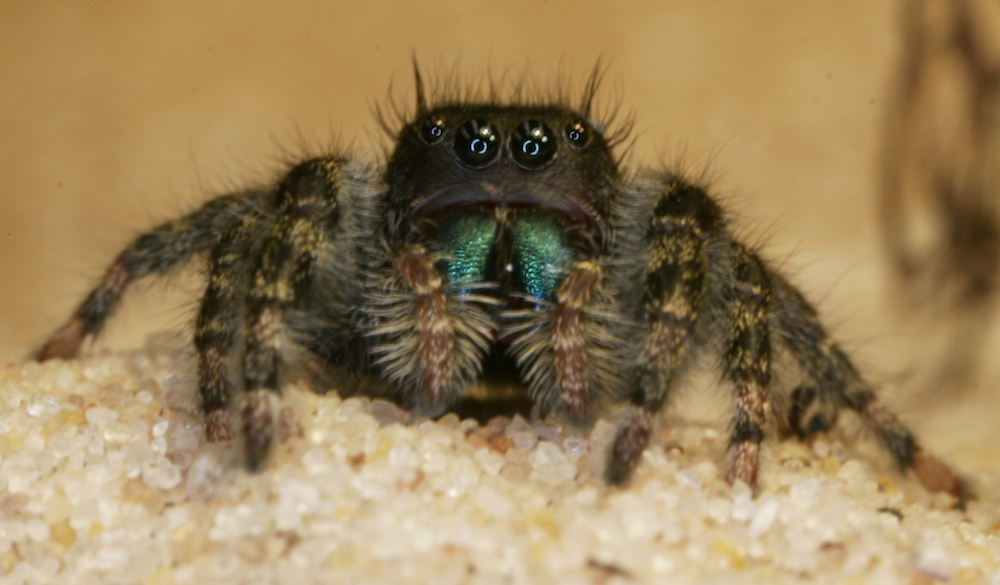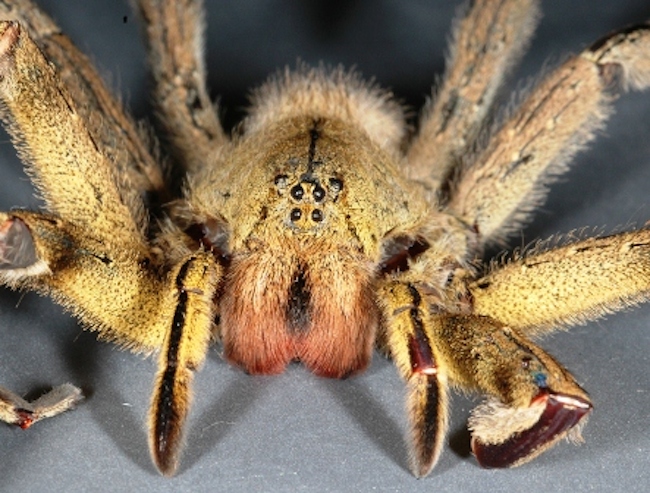5 Spooky Spider Myths Busted

Spiders: they creep, they leap, they haunt the nightmares of arachnophobic humans. But a lot of the fear surrounding spiders is based on myths, not facts, according to the experts who study these eight-legged creatures.
Did you know, for example, that the venom of most tarantulas would hardly make adult humans flinch, let alone kill them? And all those stories you've heard about spiders laying eggs inside an open wound are the stuff of urban legend, not reality.
Here are five more spider myths that irk arachnologists and spider-lovers alike. [Creepy, Crawly & Incredible: Photos of Spiders]
Myth No. 1: Didn't see what bit you? It was probably a spider
"Unquestionably, the most pernicious of all spider myths is the idea that if you didn't see what bit you, it was a spider," said Rod Crawford, curator of arachnids at the Burke Museum of Natural History and Culture in Seattle.
Spiders are blamed for all kinds of bites, bumps, rashes and growths that they likely had nothing to do with, according to Crawford. The myth that spiders tend to bite people when they least expect it — like when they're lying in bed — has been making the rounds for well over a hundred years, but it's not clear how it got started, he said.

While it is certainly possible for spiders to bite people in bed, Crawford said this doesn't happen often. Unlike mosquitos or ticks, spiders don't feed on human blood, so they have no reason to venture near a slumbering human on purpose. And even if you were to roll on top of a spider in your sleep, it would be tough for the critter to bite you since its fangsare located underneath its body, Crawford said.
Sign up for the Live Science daily newsletter now
Get the world’s most fascinating discoveries delivered straight to your inbox.
The notion that spider bites are extremely common is also a potentially dangerous myth. Several conditions that are wrongly labeled as spider bites — particularly skin infections and skin cancer — are actually much more serious than spider bites and require immediate medical attention, Crawford said.
Myth No. 2: Spiders are insects
Spiders are not insects, even though both spiders and insects belong to the same phylum (Arthropoda). In fact, spiders and insects are members of different classes: Spiders belong to the class Arachnida, while insects belong to the class Insecta. This means that spiders and other arachnids are as far removed from insects as birds are from fish, Crawford said.
To distinguish a spider from an insect, you can start by counting how many pairs of legs it has, Crawford said. Spiders have four pairs, whereas insects have three. A spider also has two main body parts — the cephalothorax at the front (the legs are attached to this part of the body) and the abdomen in the rear. Insects have three body parts: a head, thorax and abdomen.
Misidentifying spiders as insects can be more than just a harmless mistake.
"It leads indirectly to a lot of environmental pollution because it results in unnecessary pesticide use," Crawford said. Pest control companies often use insecticides to kill off the spiders inside a house, but these chemicals aren't formulated to kill spiders and so they don't typically work, he added. Instead of insecticides, sticky traps can be a more effective way to rid your home of eight-legged creatures. [Gallery: Spooky Spiders]
Myth No. 3: If you see a spider in your house, you should put it back outside
You may think you're being kind by putting a spider you find in the bathroom sink outside on the lawn, but this isn't necessarily the case. Putting a house spider outside is a little like "freeing" a lion that has spent its whole life inside a zoo: the odds that it'll survive a return to its "native habitat" aren't very good.
This is because most of the spiders found in homes — about 95 percent — have adapted to life indoors, according to Crawford. While spiders may wander into your home from outside every once in a while, this isn't the norm. Spiders found indoors likely belong to a small number of species, dubbed house spiders, that have been living with humans since at least the days of the Roman Empire, Crawford said.
In Seattle, for example, there are approximately 137 species of spiders that live outdoors and there are approximately 25 known species of house spiders. Only eight of those species, however, can survive both inside a house and outside in the garden, Crawford said.
So what should you do when you see a spider in your house? Crawford suggests leaving the critter alone, but if that's not your style, he recommends trying to keep spiders out of certain areas of your home where you'd rather not run into them, such as the bedroom. Seal any gaps in floorboards, cracks in walls or other holes or crevices through which the spiders may access these spaces, Crawford said.

Myth No. 4: Spiders are aggressive
As Crawford said, spiders don't seek out human beings just to bite them for fun. But, spiders also don't always bite humans when they have the opportunity to do so.
"The thing that annoys me most about public perception of spiders is that [people think] they are all aggressive," said Lizzy Lowe, a doctoral candidate at the University of Sydney's School of Biological Sciences. "I collect a lot of spiders, and I do this all by hand. Very few will try to attack you or are going to do you any harm if they do accidentally bite you." [What Really Scares People: Top 10 Phobias]
Bites can occur when spiders feel threatened or are surprised, but for the most part, spiders seem pretty oblivious to humans, according to Lowe. Crawford said he has handled tens of thousands of spiders over the course of his 30-year career and has been bitten only twice — both of which caused what he calls "trivial" effects.
And when it comes to being aggressive, some spiders are simply misunderstood. Jumping spiders often terrify people with their ability to leap great distances, Lowe told Live Science in an email. But, these small spiders are not at all aggressive toward humans, and their venom is not a threat to people, she said.
Myth No. 5: There are really deadly spiders in places like Australia and Brazil
"While Australians love to trade on the 'most of our wildlife will kill you' vibe, the reality is that there are very few really dangerous spiders in Australia," Dieter Hochuli, an associate professor in the School of Biological Sciences at the University of Sydney, told Live Science in an email. "I think it’s a myth we perpetuate out of some odd patriotic thing."

Australia's most venomous spiders include the Sydney funnel-web (Atrax robustus) and the redback spider (Latrodectus hasselti). Both are found in forested and urban areas, making contact between these species and humans more likely than some city dwellers might prefer. However, no deaths have been associated with these "deadly" spiders in many decades, according to Hochuli.
No one in Australia has died from being bitten by a Sydney funnel-web spider since 1981, when antivenin treatments became available. Redback antivenin was developed in the 1950s, and no deaths have been reported from these types of spider bites since.
In Brazil, there are three species of wandering spiders — named for their tendency to wander around on the ground looking for food — that are often considered "deadly." Phoneutria fera, P. nigriventer and P. keyserlingi all have bad reputations, but it's extremely rare for these spider bites to cause human deaths, according to Richard Vetter, a retired research associate of entomology at the University of California, Riverside.
A study of Brazilian wandering spider bites conducted in 2000 showed that, of 422 Phoneutria bites, only two resulted in severe envenomation, and both of those cases occurred in children under age 10. One of those cases resulted in the death of a 3-year-old child, but most adults bitten by these arachnids experience mild to moderate symptoms, such as localized pain and vomiting. Some adults experience no symptoms at all, according to the study. .
Follow Elizabeth Palermo @techEpalermo. Follow Live Science @livescience, Facebook & Google+. Original article on Live Science.

Elizabeth is a former Live Science associate editor and current director of audience development at the Chamber of Commerce. She graduated with a bachelor of arts degree from George Washington University. Elizabeth has traveled throughout the Americas, studying political systems and indigenous cultures and teaching English to students of all ages.









